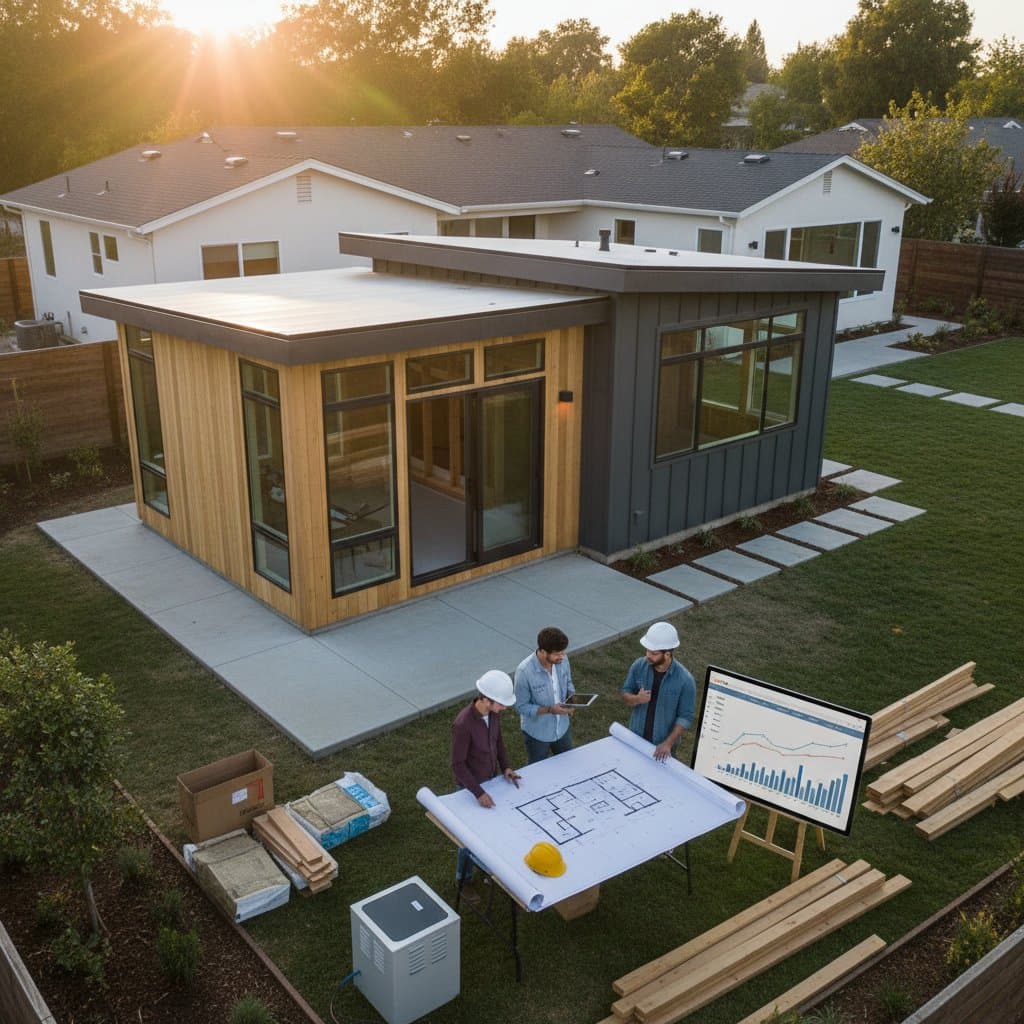Understanding 2025 ADU Costs: A State-by-State Analysis
Transforming underutilized backyard space into an accessory dwelling unit (ADU) offers versatility for guest accommodations, rental income, or personal retreats. However, costs fluctuate widely based on location-specific factors such as labor availability, regulatory demands, and material pricing. This analysis details average expenses, project timelines, and essential considerations to help you budget effectively for a successful build.
Key Regional Cost Ranges
Costs encompass design, permitting, and core construction elements, excluding extensive site work on challenging terrain. The table below highlights representative states with their typical ranges and primary influences. These estimates assume standard finishes like durable vinyl plank flooring, energy-efficient windows, and basic cabinetry.
| State | Average Cost Range (USD) | Primary Cost Influences |
|---|---|---|
| California | 250,000 - 400,000 | Rigorous seismic standards, elevated labor wages, complex permitting processes |
| Oregon | 180,000 - 300,000 | Emphasis on eco-friendly materials, advanced insulation requirements |
| Washington | 200,000 - 320,000 | Substantial permit applications, expenses for utility integrations |
| Texas | 150,000 - 280,000 | Disparities between urban density and rural simplicity |
| Florida | 140,000 - 260,000 | Mandates for flood-resistant designs, corrosion-proof building supplies |
| New York | 230,000 - 370,000 | Space constraints in populated areas, premium craftsmanship rates |
| Colorado | 190,000 - 310,000 | High-altitude ventilation needs, cold-weather durability features |
| Arizona | 160,000 - 270,000 | Cooling system optimizations, sun-protective exterior treatments |
| North Carolina | 150,000 - 250,000 | Varied zoning laws, soil-dependent foundation choices |
| Illinois | 180,000 - 280,000 | Climate-adaptive roofing, potential for existing structure adaptations |
| Massachusetts | 220,000 - 350,000 | Preservation rules in heritage zones, detailed approval timelines |
| Nevada | 140,000 - 230,000 | Preference for prefabricated options, arid-environment adaptations |
Upgrading to premium elements, such as quartz surfaces or bespoke millwork, typically increases totals by $50,000 to $80,000. Consult local contractors for precise quotes tailored to your site's unique conditions.
Project Timeline Breakdown
From initial sketches to final occupancy, ADU projects generally span 6 to 12 months. Delays often arise from regulatory hurdles or weather interruptions. Divide the process into these stages for better planning:
- Design and Planning: 1 to 3 months. Collaborate with architects to draft blueprints that comply with local codes and match your vision.
- Permitting and Preparation: 1 to 2 months. Submit applications and conduct soil tests or surveys to address site-specific challenges.
- Construction Phase: 3 to 6 months. Oversee foundation pouring, framing, and interior installations, coordinating with specialized trades.
- Inspections and Connections: 1 month. Secure certifications and link to main utilities, ensuring all systems function seamlessly.
Opting for modular units can compress construction by 4 to 8 weeks, provided delivery logistics align with your schedule.
Comparing Build Approaches
Engaging certified experts ensures compliance and quality, though skilled homeowners might incorporate personal efforts to control expenses. Evaluate options based on your expertise and risk tolerance:
| Method | Potential Savings | Key Considerations |
|---|---|---|
| Complete Professional Oversight | Baseline (no savings) | Streamlined management, full warranty coverage, minimal personal involvement |
| Selective Owner Involvement (e.g., interiors) | 10 to 20 percent | Verify code adherence for critical inspections; ideal for cosmetic tasks |
| Owner-Builder Route | 20 to 30 percent | Demand strong project oversight skills; secure insurance against liabilities |
Restrict self-managed work to safe areas like trim installation or surface treatments. Obtain pre-approval from authorities for any hands-on electrical or sanitation elements to avoid costly rework.
Maximizing Return on Your ADU Investment
The initial outlay for an ADU frequently yields substantial benefits, including a 25 to 35 percent uplift in overall property appraisal in supportive markets. Rental potential can cover ongoing expenses, while family-oriented uses reduce reliance on separate residences. Factor in tax incentives for energy-efficient builds to further optimize financial outcomes.
Sustaining Your ADU Over Time
Treat your ADU as an extension of your primary residence by implementing routine care protocols. Conduct annual reviews of structural integrity, including roof assessments and system diagnostics. Address seasonal demands, such as insulating against extremes or clearing drainage paths, to preserve functionality and aesthetics. For income-generating units, budget 5 to 10 percent of annual revenue for upkeep and unforeseen repairs.
